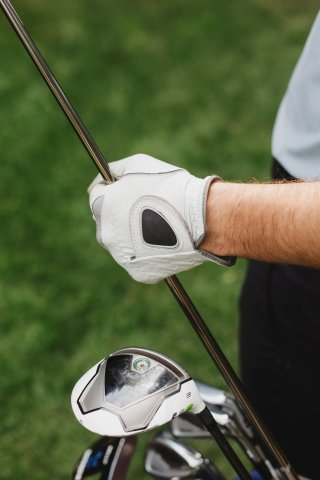You are here
Home ›Natural Remedies for Sports Injuries

More than twenty percent of all reported accidents are sport related. In the context of this article, sport is a generic term used to describe both structured and free-style exercise, physical recreation, various games and a vast assortment of athletic activities which may or may not involve formal competition.
The Quran (Koran) actually refers to life as a sport and a pastime, but that is a different matter which I won’t go into to.
Injuries associated with sport consist of a wide variety of soft tissue, skeletal and joint-related aberrations. These are commonly described as strains, sprains, dislocations, fractures, lacerations, cuts, abrasions, blisters, inflammation and pain. If you’ve been an athlete for any length of time (especially one engaged in contact sport) I know you can relate. But everyone is susceptible to injury by being active and we all know that optimum health cannot be achieved without activity. Right? So if you want to prevent injuries from occurring, or see chronic injuries clear up for good, please read on.
For decades I've rambled on about nutrition quality and its connection to inner health and performance. I’ve heard a thousand men and women tell me how great they eat, but after performing a clinical and objective analysis of what they actually routinely dine on, they’re shocked by an outcome which tends to verify enormous dietary imbalances, sub-optimal quantities of essential minerals and insufficient provisions of essential amino acids.
Here’s what I generally find — micronutrient (vitamins and minerals) levels below those recommended by nutrition research councils, food staples consisting of processed flour (bread, bagels, pasta, muffins), commercial oils loaded with harmful trans-fats and/or peroxides, a high-sugar intake derived from milk (lactose) and sweets (sucrose, fructose, corn syrup), a low intake of high-quality protein, meager amounts of deep green, chlorophyll rich vegetables and a diet typically dominated by enzyme deficiency, acidity, too much cooked food and too little water. Alcohol and OTC medications are common.

A body built from hay, wood and stubble will blow over in a storm. You simply can’t build strong tendons, healthy cartilage and functional ligaments out of white sugar, flour and salt. The mineral resources of such a dietary selection are barely existent and could never supply the biochemical demands of an active body. Consuming refined high-glycemic carbohydrates actually increases the urinary loss of magnesium, chromium and selenium and negatively affects insulin and glucose management — not an ideal setting for tissue healing or pain relief. Building a cellular matrix of integrity requires an excellent diet comprised of mineral dense foods, rich sources of omega-3 fatty acids, adequate protein, an abundant supply of both fat and water soluble antioxidants and plenty of filtered clean water.
Athletes raised on refined food are far more susceptible to injury when exposed to the stress of aerobic and anaerobic exercise, the impact of a hip check or the charge of an defensive lineman. Especially older athletes. Children and teenagers are more resilient because they possess greater organ reserves of micronutrients, higher levels of metabolic enzymes, superior flexibility and demonstrate less evidence of oxidative damage.
No matter what our age however, everyone is designed to move and is blessed with the intrinsic ability to adapt to virtually any form of stress — provided of course we don’t exceed our tolerance or destroy our recovery ability.
The vast majority of really active people are young, and that is obviously how many of them get away with smoking, eating what appears to be nothing substantial and snacking on chips and fries. For a short time they can rely on a constant flow of adrenaline pumped from adrenals not yet scarred, depleted or enlarged from decades of stress and poor diet. But eventually their incessant pace and devotion to exercise and sport is challenged by chronic health problems and a body weakened over time by nutrient deficiency and chemical toxicity. When the compensation of youth is gone, many turn to drugs.
The problem with medications is that they don’t feed the body. Overuse of chemical pain killers (analgesics) and anti-inflammatory medication NSAIDS can also lead to addiction, joint erosion and immune suppression. So outside of RICE therapy, which includes Rest, Ice, Compression and Elevation, I would suggest an alternative which provides in many cases the same or better results as the drugs, but without the harmful side effects. Keep in mind however what I have said about diet and whole food nutrition.
First, consider the positive effects of the long-chain fatty acids derived from borage (gamma-linolenic acid or GLA), flax (linoleic & linolenic acid) and salmon (eicosapentanoic acid or EPA and decosahexanoic acid or DHA) oils. These highly reactive molecules function as natural anti-inflammatory agents by raising levels of specific prostaglandins, namely PGE1 and PGE3. Cut back on or eliminate eggs yolks and red meat for awhile and replace with wild salmon, halibut and a whey peptide supplement. The former contain high quantities of arachidonic acid, a fat which elevates the pro-inflammatory cascade of prostaglandin PGE2.
Next, think raw materials for building new structure. Here’s where glucosamine sulfate, hydrolyzed collagen, methylsulfonylmethane (MSM), manganese and silica come in. With these components we’ve got increased production of proteoglycans to rebuild cartilage, amino acids to synthesis collagen and increase nitric oxide (NO) formation for tendon healing, organic sulfur to restore flexibility to the protein fixtures of the cell wall and key trace elements which play specific roles in bone remineralization and tissue elasticity. Go with Nature first, protect yourself from oxidative stress and train with precision and excellence.
Photo by Sarah Pflug from Burst

As always, stay well and live free!
Dr.C
- Log in to post comments